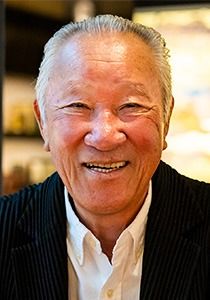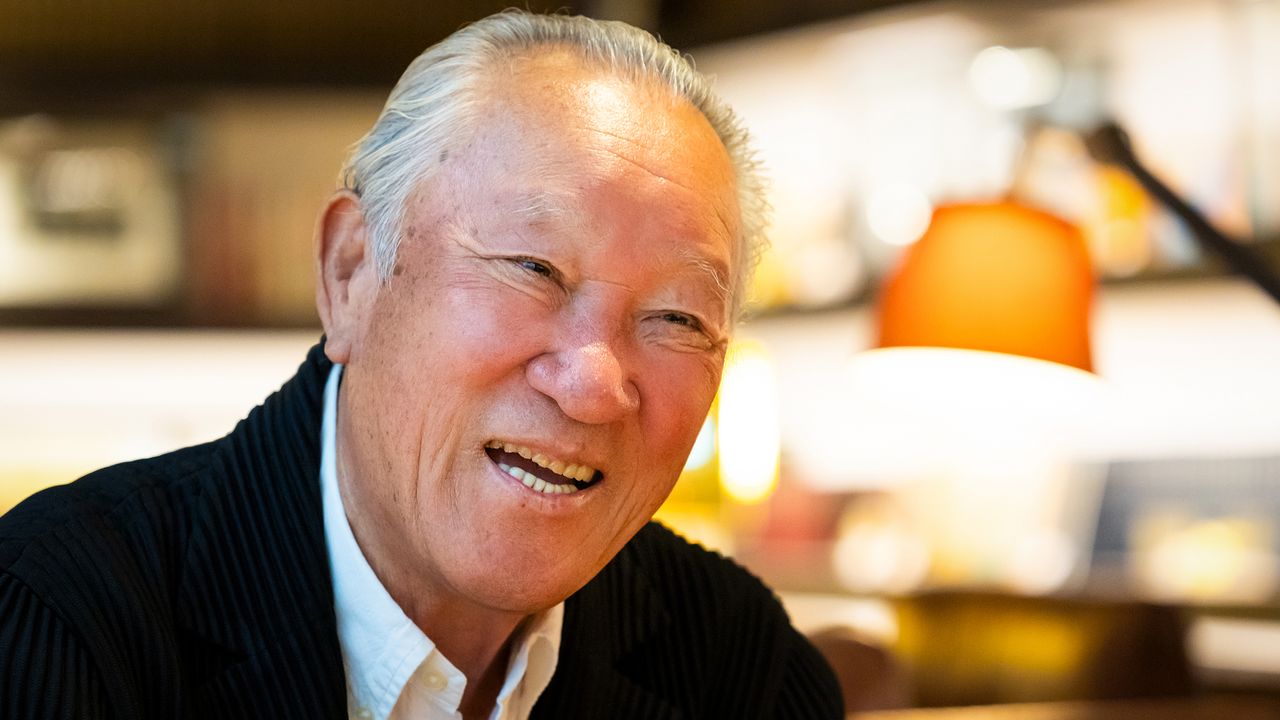
Legend of the Links: Pro Golfer Aoki Isao Reflects on 60 Years in the Sport
Sports World- English
- 日本語
- 简体字
- 繁體字
- Français
- Español
- العربية
- Русский
A Hall-of-Fame Career
After six decades in golf, legendary Japanese linksman Aoki Isao is still going strong. At age 82, he no longer tours the professional circuit, but he remains a prominent force in promoting the sport. He recently stepped down as director of the Japan Golf Tour Organization, a post he held for four terms starting in 2016. Since leaving the JGTO, which kept him busy crisscrossing the country to negotiate with sponsors and attend the tour’s 40 events, he has devoted more time to personal pursuits, including renewing old bonds forged on the links.
In June, he took a 10-day trip with his daughter to the United States to attend the fiftieth anniversary of the World Golf Hall of Fame in Pinehurst, North Carolina. Aoki, who was inducted into the hall himself in 2004, flashes his trademark smile as he recounts meeting up with old rivals from his days on the PGA tour, saying, “Jack [Nicklaus] couldn’t make it, but I caught up with Lee Trevino, Ben Crenshaw, and Mark O’Meara.”
The trip also included an outing to watch the US Open Championship, a tournament Aoki came close to winning in 1980. “Pinehurst is a tough course.” Giving a nod to PGA regular Matsuyama Hideki, who finished sixth, he says, “He put in a gutsy performance.”
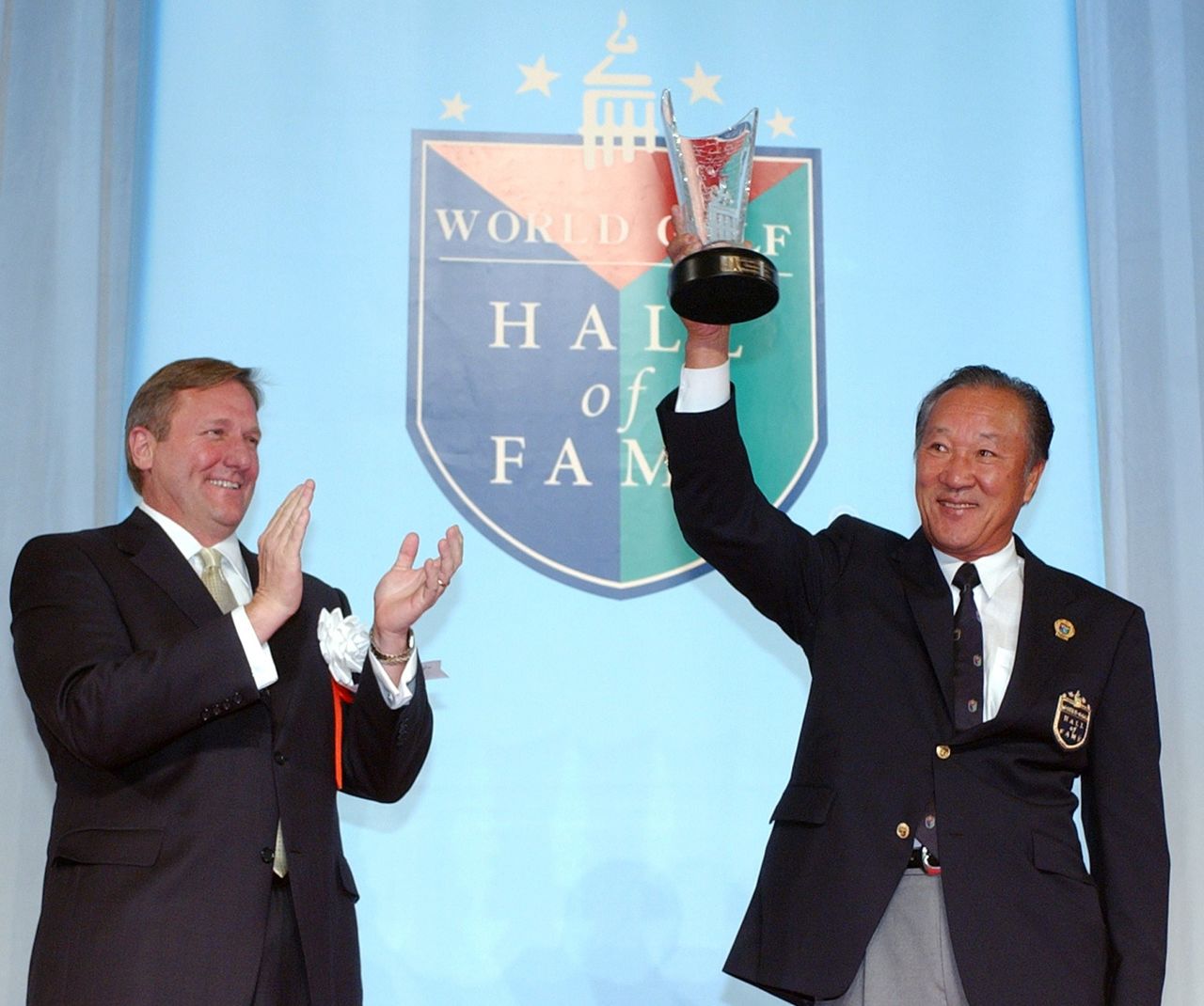
Aoki Isao (right) raises a commemorative trophy during his World Golf Hall of Fame induction ceremony in Tokyo on December 9, 2004. (© Jiji)
The World Golf Hall of Fame, which recently relocated to Pinehurst from the World Golf Village resort in Florida, opened in 1974 to commemorate the top professional players from around the world. Inaugural inductees include such legends as Arnold Palmer, Jack Nicklaus, and Master Tournament co-founder Bobby Jones. Aoki followed female golfing legend Higuchi “Chako” Hisako as the second Japanese player inducted into the hall, a group that now also includes Okamoto Ayako and “Jumbo” Ozaki Masashi.
“Golf has been good to me,” states Aoki. “I want to give back to the sport and those who have helped me over the years.” He does this in part through his long-time support of junior players and by participating in pro-am events, which provide him the chance to pass his experience and know-how on to younger generations.
Stories to Tell
Aoki’s home course is the Mobara Country Club in central Chiba Prefecture, a place where he has spent countless hours as a professional honing his game. One of his most memorable rounds there was in 2019 when he joined former Prime Minister Abe Shinzō and then US President Donald Trump during the latter’s state visit to Japan.
Even in his eighth decade of life, Aoki remains a consummate competitor when on the links. “I might be aging, but I can still shoot in the seventies. I never stop looking to improve my score.” Looking back at his younger years, though, Aoki insists that he got into golf by chance. “As a young man, baseball was my sport,” he says. He played for his junior high school team and would have continued with the sport into high school if life had not intervened. “In my final year of junior high, my team was knocked out of the qualifying round for the prefectural tournament.” With one out remaining in the final inning, a passed ball by the catcher allowed the opposing team to score the winning run. The loss devastated Aoki. “I was so angry that I threw all my gear away. This led to a huge blowup with my old man, who ended up kicking me out and telling me to make my own way. So, I left home.”
Needing to earn a living, he turned to caddying. “I’d heard you could make money at it, so I got a job at the Tokyo Tomin Golf Course, which at the time was the home course of top Japanese pro Hayashi Yoshirō.” Aoki later moved to the Abiko Golf Club in Chiba, but he was happy to stick with his caddy duties. “The idea of playing golf professionally didn’t even occur to me.”
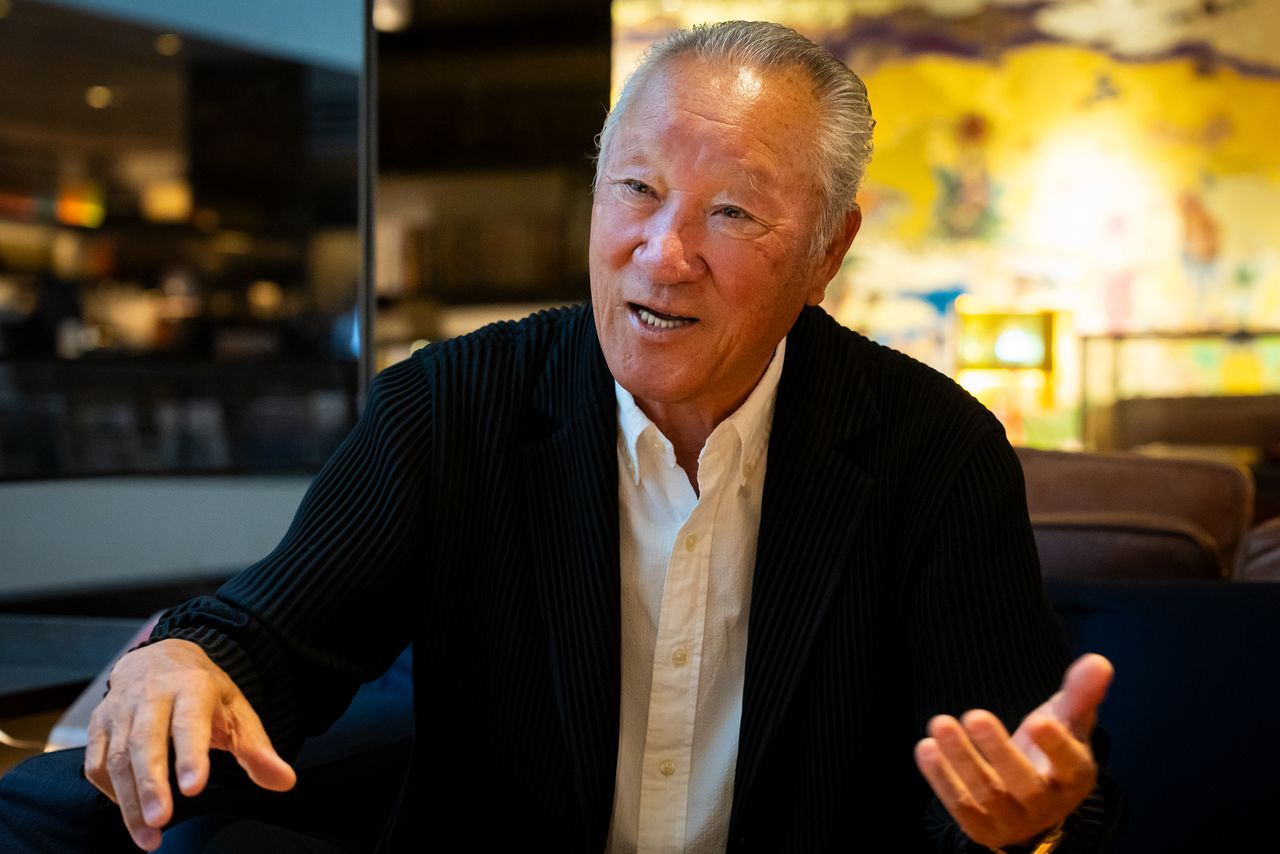
Aoki talks about his early years as a golfer. (© Hashino Yukinori)
Hayashi winning the 1961 Japan PGA Championship, which offered a modest prize of ¥300,000, changed his view. “The purses back then were smaller,” says Aoki. “But I figured that if Hayashi, who was on the small side, could pocket that much money, a tall guy like me wouldn’t have any difficulty bringing in at least 500,000 yen. It makes me laugh now, but that was my reasoning for turning pro.”
During his first professional qualification attempt, Aoki failed his playing ability test by one stroke. Moving his base from Abiko to the Hannō Golf Club in neighboring Saitama Prefecture, he passed on his second try in December 1964, becoming a professional golfer at the age of 22.
Working as a club pro, Aoki saw his salary at the golf course more than double. “It wasn’t much, but at that age it felt like a small fortune.” He was happy to live off his meager wages, but in his second or third year, an older professional golfer pulled him aside and admonished him for his lack of drive. “He scolded me for being all talk and said I couldn’t call myself a pro if I didn’t play in any tournaments.” Stung by the words, Aoki was determined to get serious and set about training in earnest.
Heading to the Yugawara Country Club in Kanagawa Prefecture, he arranged with the manager of the facility to let him practice there. “I laid down a wad of money and asked to stay until it ran out,” he explains. “After a month, I thought I’d used up the deposit and would be told to leave, but when I brought it up with the manager, he just waved me off.” It turns out that the manager had been impressed with Aoki’s work ethic. Hearing from the greens keeper how the young golfer could be seen in the early hours running around the course before hitting the links, the manager decided to absorb the cost and let Aoki train to his heart’s content. “I’m sure it cost the course a pretty penny, but thanks to his generosity my golf game improved tremendously.”
After seven years as a professional golfer, Aoki in 1971 won his first event, the Kantō Pro Championship. Looking back on that moment, he says, “I’ve won a number of titles over my career, but without a doubt, the first one is the most memorable.”
A Force on the Tour
Aoki became one of the top players in Japan, joining “Jumbo” Ozaki to lead what is known as the “AO era.” He also made a name for himself playing overseas, where he faced off against some of the top talent in the sport. His first foray abroad was on the Asia Golf Circuit when he was 26. But it was after his breakout season in 1973 in which he captured six titles, including the Japan PGA Championship, that he began receiving regular invites to major tournaments like the Masters and other events abroad.
Aoki would spend several seasons playing primarily outside of Japan, something he says he began considering after winning the 1978 World Matchplay Championship in Britain. “Claiming the title made me feel like I could win on the US tour.” His conviction grew stronger when he finished runner-up at the same event the following year. Then came his outstanding performance at the 1980 US Open.
Making his second appearance in the major tournament, Aoki fought his way to the top of the leader board to be neck-and-neck with Jack Nicklaus heading into the fourth and final round. He allowed the American golfer to take the lead but kept the pressure on until the final hole. His second-place finish was the highest by a Japanese player at a US major golf championship up to then, with his battle with Nicklaus earning him a place in the storied history of the tournament.
Just three years later in 1983, he made history by winning the Hawaiian Open, marking the first title by a Japanese golfer at a US tour event.
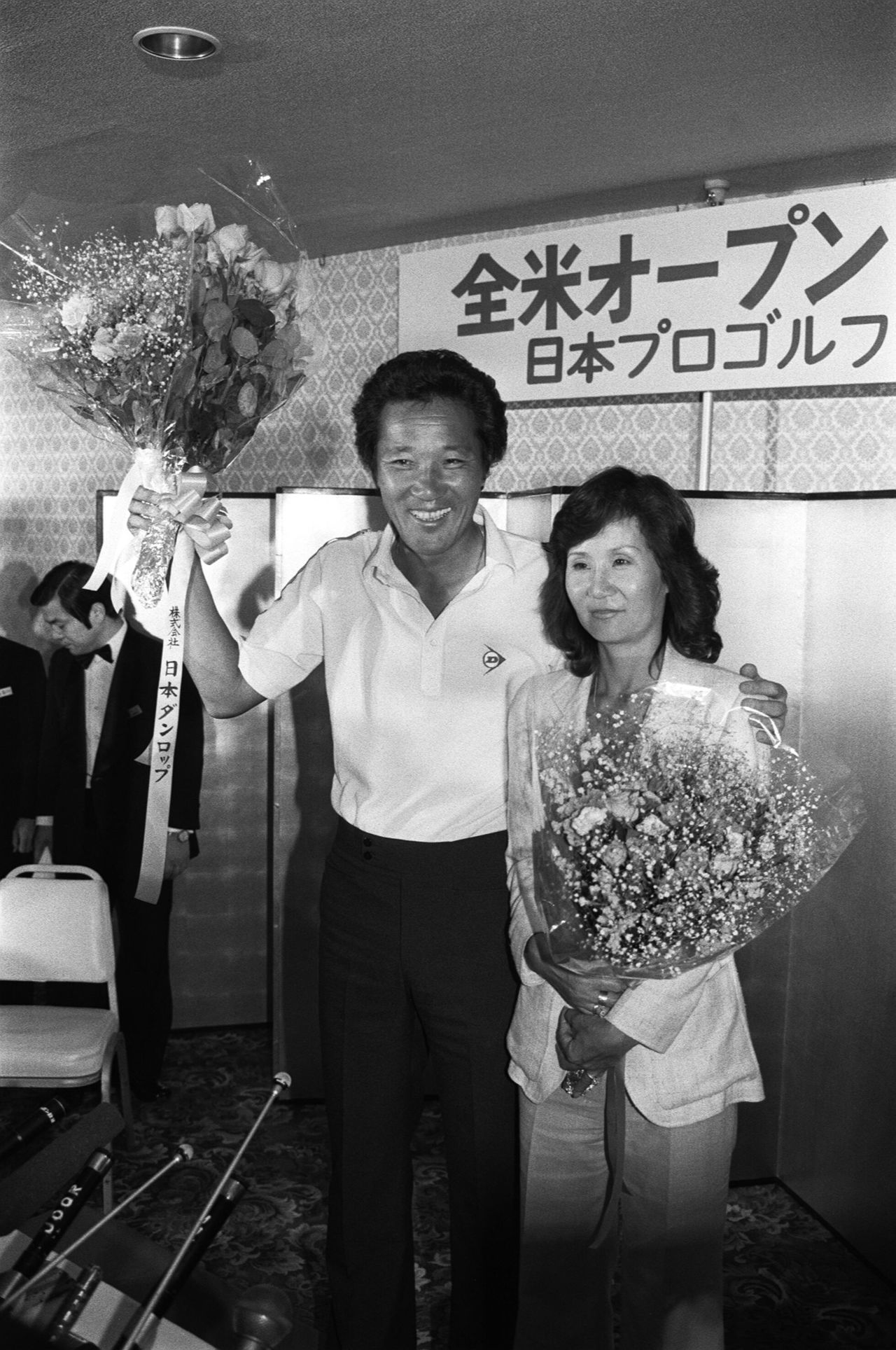
Aoki with his wife Chie at a press conference in Tokyo on June 17, 1980, following his second-place finish at the US Open. (© Jiji)
Unlike his decision to turn pro, Aoki insists that money was not the main factor in his decision to play overseas. “In the 1980s, the Japanese professional golf tour was one of the richest around,” he explains. “Spanish golfer Severiano Ballesteros once even asked me why I played on the US tour when I could make a killing in Japan.” Aoki’s focus was not on big payouts, though. “I wanted to be a pioneer.”
But hopping back and forth between Japan and international events came with challenges. He recounts the struggles of travelling overseas from Japan: “I was always rushing to catch a connecting flight. Maintaining a healthy diet while on the road was also a struggle. Then I had to convince my sponsors in Japan to let me go. I couldn’t disappoint the fans either, so I always aimed to finish in the top ten. What kept me going was a desire to prove that I could make it wherever I played.”
Blessed by Golf
Switching his attention to Japan’s younger generation of golfers, Aoki says that there is not the same hunger to take on the world as in his day. “There have been a number of very good Japanese players appearing on the international circuit in the last ten years,” he says. “But among them, only Matsuyama Hideki has shown any staying power.”
Pointing to the disappointing performances of Ishikawa Ryō and others at the 2024 US Open, he laments that Japan’s top players have not had more of an impact on the US PGA tour. “I know it’s a competitive circuit,” he explains. “But it was the same in my day. You have to focus on developing specific aspects of your game—your putting or bunker shots or whatever—if you want to hold your own against the best players. More important, though, is having the right mindset. You can’t pat yourself on the back for qualifying for a tournament and then just go through the motions. You have to want to win.”
Looking back over his career, Aoki says golf has allowed him to rub elbows with the rich and famous, including US Presidents ranging from Gerald Ford to Bill Clinton to Donald Trump. “When Prime Minister Abe asked me to play a threesome with President Trump, it was out of respect for my accomplishments as a professional golfer,” he says, welling up with pride.
“Golf has been my calling,” Aoki says. “I’ve always preferred company to being alone, and golf has allowed me to share so much with so many different people. Even now, whenever I play, I quietly thank the powers that be for creating golf before I tee up. I have nothing but the deepest gratitude.”
(Originally published in Japanese. Banner photo © Hashino Yukinori of Nippon.com.)

